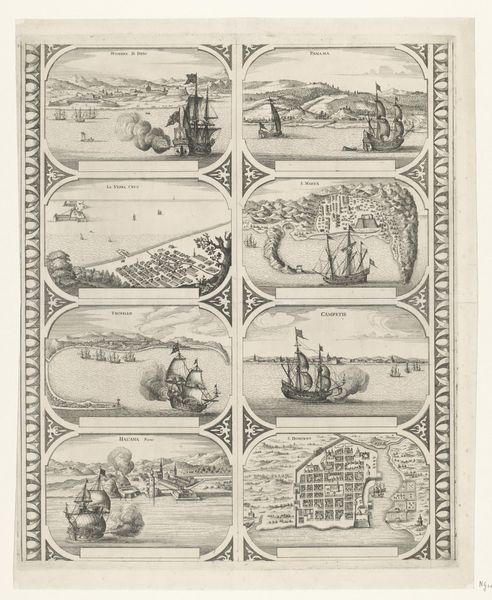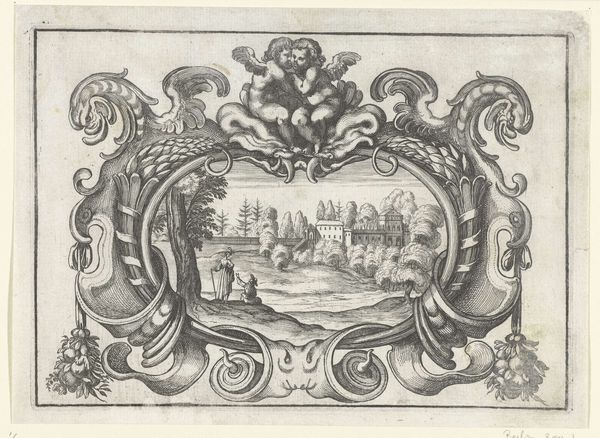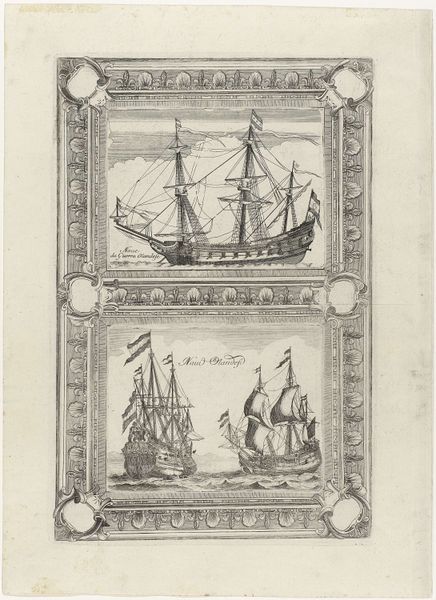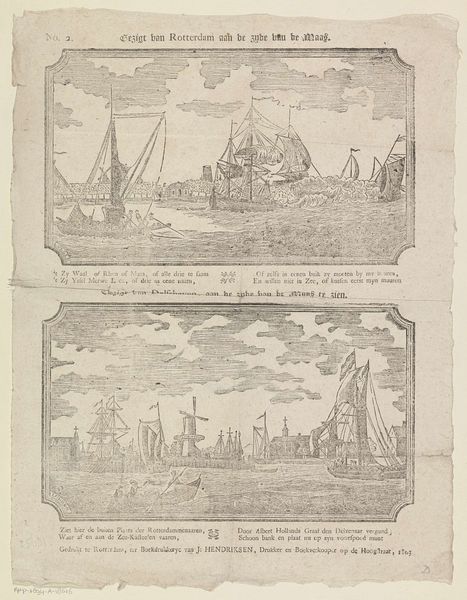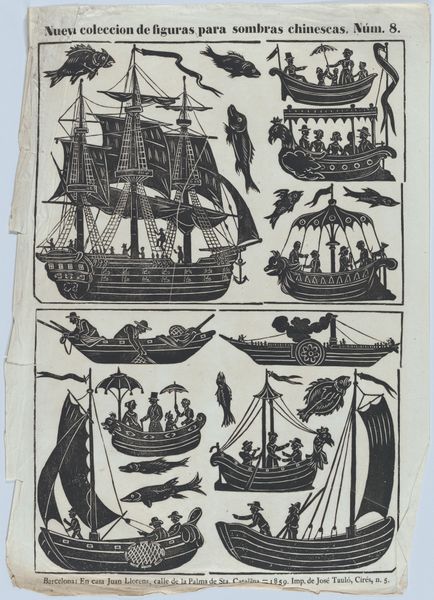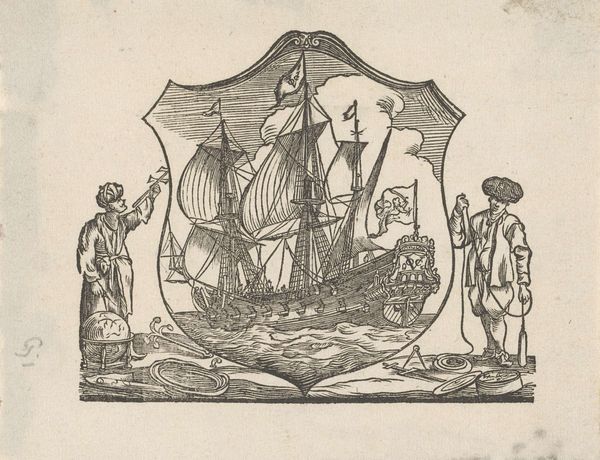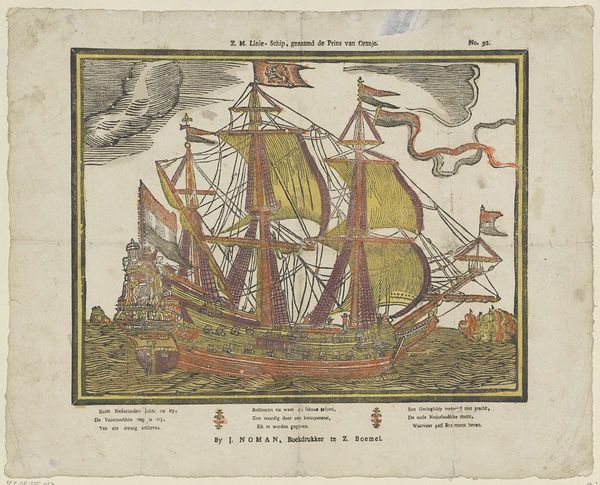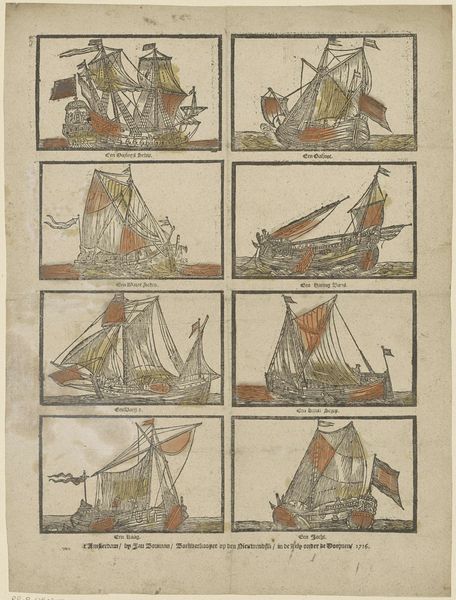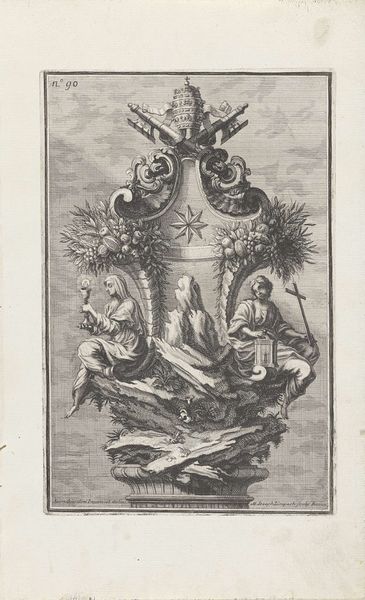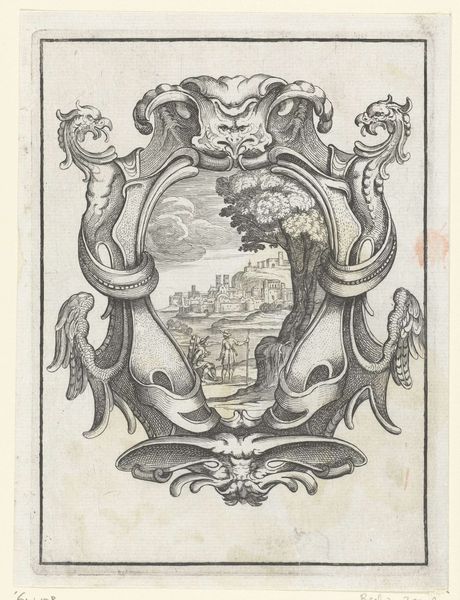
De gekroonde scheep-vaard / En walvis-vangst wyd vermaard. 1725 - 1780
0:00
0:00
johannesiikannewet
Rijksmuseum
drawing, print, paper, ink, woodcut, engraving
#
drawing
#
narrative-art
#
baroque
#
dutch-golden-age
# print
#
landscape
#
figuration
#
paper
#
ink
#
woodcut
#
genre-painting
#
engraving
Dimensions: height 397 mm, width 310 mm
Copyright: Rijks Museum: Open Domain
Curator: What an exuberant print! The colors, though somewhat faded, still pop with a delightful vibrancy. This is "De Gekroonde Scheep-vaard / En Walvis-vangst wyd vermaard," a woodcut and engraving on paper by Johannes (II) Kannewet, created sometime between 1725 and 1780. Editor: It feels celebratory, almost comically so! The flying figures blowing trumpets are particularly enchanting; there is something naive, but earnest, about them. The way the scenes of ships are depicted is incredibly fascinating as well. Curator: Indeed. Note the rigid, almost diagrammatic presentation of the ships in the upper registers; a structured compositional choice designed to elevate the maritime narrative. Contrast that with the active scene of whaling that is illustrated along the lower part of the work; you can appreciate Kannewet’s keen understanding of his art-historical context. Editor: The shift is rather pronounced! While the upper scenes carry a sense of order and, dare I say, optimism, the lower panels teem with chaos. It brings out the danger of these seafaring activities, grounding that celebration with some brutal truth. The whale is nearly lost among the ships, spears, and men. Curator: Consider, though, the intended audience. Prints such as this were disseminated widely, informing and shaping the Dutch perception of its own maritime exploits. Kannewet would have needed to walk a fine line, balancing a celebratory view with a hint of reality. Editor: True. He’s marketing the whole seafaring package—glory, adventure, and a dash of the everyday dangers. Curator: It makes this work all the more rich; these kinds of pieces served as both commercial venture, and historical record. Its artifice does not detract from its cultural value; if anything, it augments our own perception of Dutch history. Editor: Thinking of this print now, I see a beautiful example of how images were used to construct collective stories, both glorifying the subject, but perhaps with an undercurrent of sober reflection. Curator: A perfect lens through which to understand the nuanced character of Dutch Golden Age art.
Comments
No comments
Be the first to comment and join the conversation on the ultimate creative platform.
